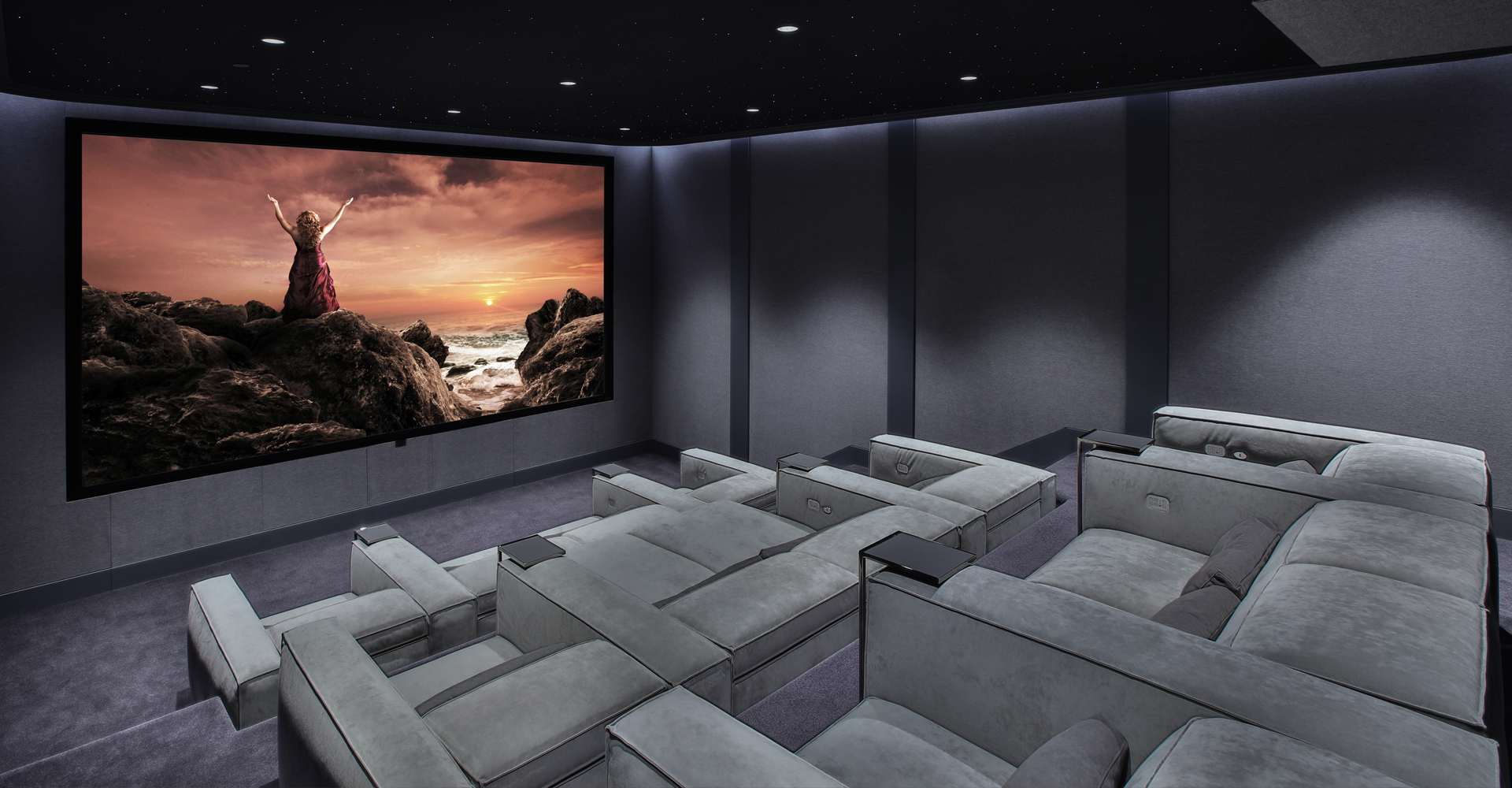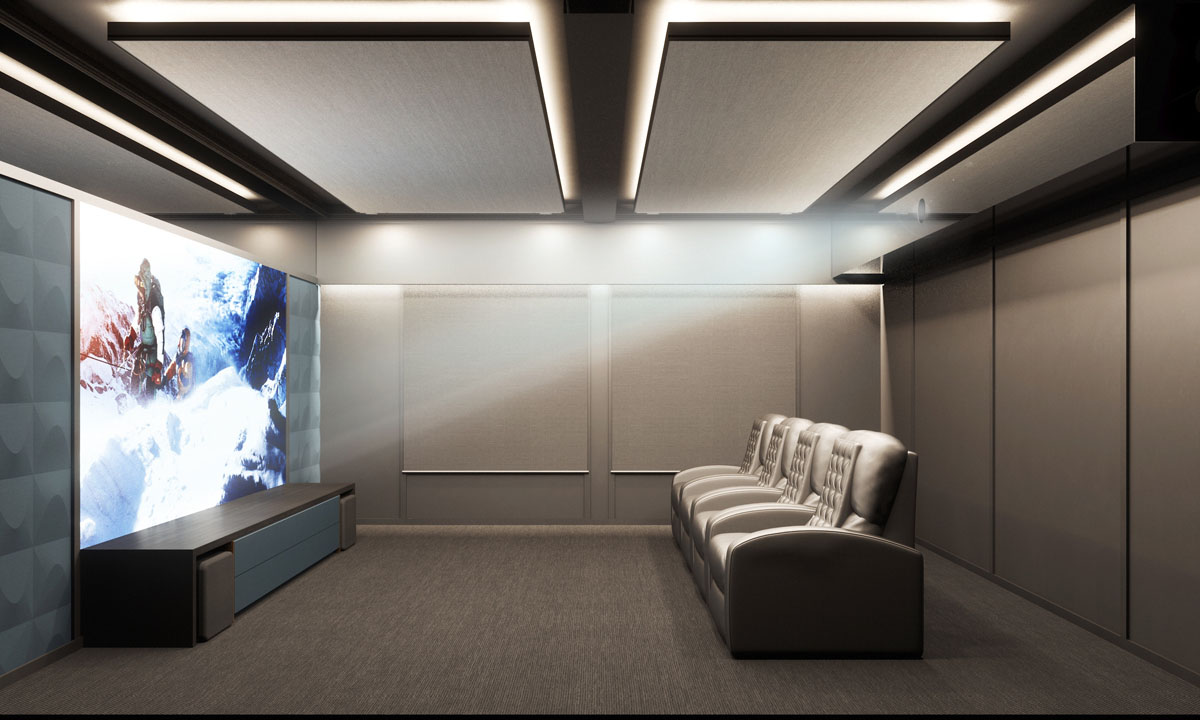Why Tampa Home Theater Installation Is a Life-Changer for Your Viewing Experience
Why Tampa Home Theater Installation Is a Life-Changer for Your Viewing Experience
Blog Article
Home Theater 101: Whatever You Required to Know for a Cinematic Experience in the house
Producing a home theater that matches the cinematic experience of an industrial theatre involves careful factor to consider of numerous parts, including screen option, sound systems, and space layout. Whether you are pondering the ideal display size or the intricacies of border audio, comprehending these basics is important.
Choosing the Right Screen
When establishing a home theater, selecting the appropriate display can make or break the watching experience - home theater tampa. The display acts as the centerpiece of your arrangement, influencing image quality, viewing angles, and total aesthetic. Secret elements to consider include screen type, resolution, and dimension
First, figure out the ideal screen size based on your area dimensions and seating distance. Next off, pick between various display kinds, such as fixed-frame, mechanized, or retracting displays, each offering distinct advantages.
Resolution is an additional important factor. For an absolutely immersive experience, take into consideration a screen created for 4K or also 8K content, making sure intensity and clarity. Additionally, think about the display's gain, which impacts illumination and comparison; a greater gain can enhance illumination in well-lit spaces, while a reduced gain might be preferable for darker environments.
Selecting Audio Equipment
Audio tools is a vital element of any type of home movie theater system, dramatically boosting the total watching experience. The option of audio equipment can figure out the deepness, clearness, and immersion of noise, critical for developing a motion picture ambience.
When picking audio tools, take into consideration a border stereo, which typically includes a receiver, numerous audio speakers, and a speaker. A 5.1 or 7.1 network system is advised, where the initial number stands for the audio speakers and the second the speaker, giving an immersive soundscape. The receiver is the heart of the system, managing audio and video signals, and should sustain contemporary formats like Dolby Atmos for an enhanced spatial experience.
Quality audio speakers are essential; try to find versions that use a balanced sound account with great bass reaction. Floor-standing speakers can generate richer noise, while bookshelf alternatives save space. In addition, think about wireless alternatives for simplicity of installation, although wired systems commonly provide remarkable performance.

Ideal Seating Plans
Producing an excellent home cinema experience pivots considerably on ideal seating plans. The arrangement of seats plays a crucial role in both convenience and watching high quality, directly impacting the total motion picture experience.
First, think about the screen dimension and checking out distance. A common standard is to position seats at a range around 1.5 to 2.5 times the diagonal dimension of the display. This makes sure an immersive experience without stressing the eyes.
Next, altitude is important. If your seats remains in a tiered format, the back rows ought to be greater than the front to stay clear of obstructions. For flat seats, guarantee that the front row is not as well near to the display, and that everyone has a clear line of other vision.
Additionally, consider the plan in regards to social characteristics. Team seating can boost the common experience, while specific seats might be favored for personal watching.

Finally, focus on comfort with ergonomic seating that supports extended viewing periods. Incorporating reclining chairs or cushioned seats can dramatically improve the experience, making the home theater a favored location for both home entertainment and leisure.
Lighting and Atmosphere
Efficient lights and ambiance are crucial components of a well-designed home cinema, as they considerably influence the watching experience. The appropriate lights can boost the cinematic feel, while bad selections can interfere with it. For optimum outcomes, consider a layered lights method that includes ambient, job, and accent lights.
Ambient lights supplies basic lighting, making sure that the area is not totally dark, which can strain the eyes. Dimmer switches are extremely advised, see this site permitting modifications based on the material being viewed. Job illumination, such as wall surface sconces or floor lights, offers useful lighting for activities like reading or browsing the space without disrupting the general environment.
Accent lights can be utilized to highlight architectural features or produce centerpieces, adding deepness and passion to the area. LED strip lights behind displays or along racks Discover More can supply a subtle radiance that improves the aesthetic experience without overwhelming the audience.

Wiring and Installation Tips
A well-planned electrical wiring configuration is important for achieving optimum efficiency in your home theater system. Proper wiring not just makes sure high-grade audio and video clip signals but likewise enhances the overall visual of your room. Begin by mapping out your format, determining where each element will be put, including your screen, audio speakers, and receiver.
When choosing cable televisions, prioritize top quality, properly gauged wiring to minimize signal loss. HDMI wires should be made use of for video clip connections, while audio speaker wire need to match the requirements of your audio speakers and amplifier. Select in-wall ranked wires to follow security standards and preserve a tidy appearance.

Final Thought
In recap, developing a phenomenal home theater experience requires cautious consideration of different components, including screen selection, audio tools, seating plans, lights, and electrical wiring. By focusing on these variables, a cinematic ambience can be successfully duplicated, allowing for immersive watching experiences that measure up to conventional theater settings.
Producing a home movie theater that equals the motion picture experience of a commercial theater entails careful consideration of multiple parts, including screen choice, sound systems, and area design.When setting up a home movie theater, selecting the best display can make or damage the viewing experience. Next, pick in between different display types, such as fixed-frame, motorized, or retractable screens, each offering distinctive benefits. For an absolutely immersive experience, think about a display designed for 4K or also 8K material, guaranteeing intensity and clearness.In summary, developing an outstanding home theater experience needs mindful consideration of various elements, consisting of screen selection, audio devices, seating arrangements, lighting, and wiring.
Report this page